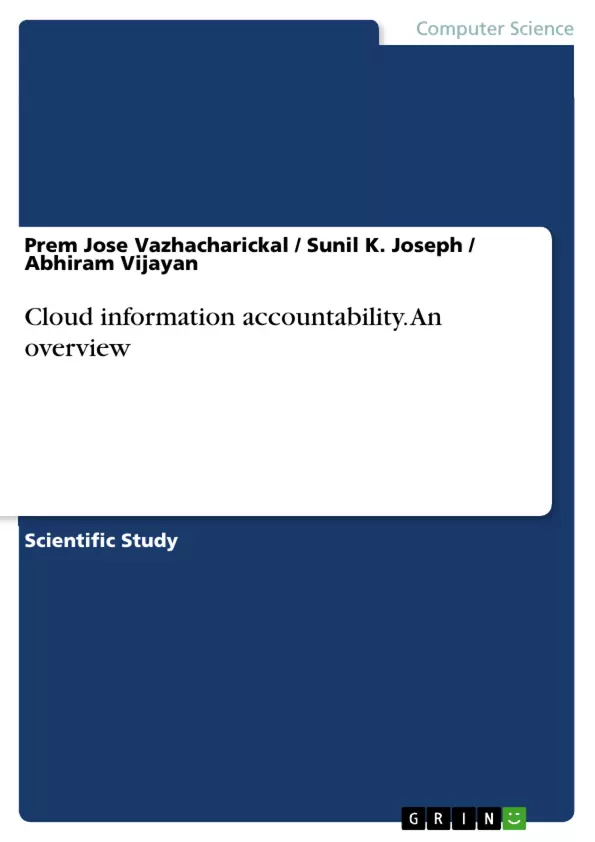Provable data possession (PDP) is a technique for ensuring the integrity of data in storage outsourcing. In this scheme, we address the construction of an efficient PDP scheme for distributed cloud storage to support the scalability of service and data migration, in which we consider the existence of multiple cloud service providers to cooperatively store and maintain the clients’ data. We present a cooperative PDP (CPDP) scheme based on homomorphic verifiable response and hash index hierarchy. We prove the security of our scheme based on multi-prover zero-knowledge proof system, which can satisfy completeness, knowledge soundness, and zero-knowledge properties. In addition, we articulate performance optimization mechanisms for our scheme, and in particular present an efficient method for selecting optimal parameter values to minimize the computation costs of clients and storage service providers. Our experiments show that our solution introduces lower computation and communication overheads in comparison with non-cooperative approaches. Using MR-PDP to store treplicas is computationally much more efficient than using a single-replica PDP scheme to store t separate, unrelated files (e.g., by encrypting each file separately prior to storing it). Another advantage of MR-PDP is that it can generate further replicas on demand, at little expense, when some of the existing replicas fail. The generation of replicas is on demand by the user’s request that is based on the security choice selected by the user at the time of file upload. The user can choose three options Low, Medium, High at the time of file upload. The uploaded file is divided in to N blocks of different sizes to achieve the efficiency in storage and is also used to improve security, here N represent the number of clouds we are using. Low means the file is divided into N blocks (here 3), and each block is stored in N different location of the single cloud. Medium means the file is divided into N blocks and each block is stored in N different clouds which improves the security of data but reduce the availability. High means the file is divided into N blocks and each N block is stored in N different clouds that are we are keeping the replicas of file in N different clouds. The system maintains a download count to dynamically create the replicas in accordance with the users demand.
Inhaltsverzeichnis (Table of Contents)
- Table of contents
- Table of figures
- Table of tables
- List of abbreviations
- Cloud information accountability: an overview
- Abstract
- Introduction
- System analysis
- Scope
- Preliminary investigation
- Materials and Methods
- Existing system
- Proposed system
- Feasibility of the study
- Operational feasibility
- Technical feasibility
- Economic feasibility
- Requirement and specifications
- Hardware specifications
- Software specifications
- About Microsoft Visual Studio 2015
- The .Net platform
- The .Net frame work
- Features of ASP.NET
- Common language runtime (CLR)
- Microsoft SQL server 2016
- C# languages
- Selection of operating system
- Windows 10: an overview
- Network data security
- Internet protocol security
- Microsoft edge web browser
- Advantages of edge web browser
- System design
- Characteristics of design
- Design of the proposed system
- Input design
- Use and design of modules
- Cooperative accessing
- Replica generation
- Integrity verification
- File Division
- Registration
- File Upload
- File verification
- File download
- File Deletion
- File storage
- TPA Creation and deletion
- View All Files
- View File Owners
- Output design
- Database design
- Table design
- Data flow diagrams
- Purpose
- Software testing
- Testing objectives
- Testing principles
- Testing strategies
- Testing methods
- White box testing
- Black box testing
- Unit testing
- Integration testing
- Output testing
- Implementation
- Implementation procedures
- Implementation plan
- Post implementation review
- System maintenance
- System security
- Limitations
- Future scope
- Conclusions
- Acknowledgements
- References
- Data Integrity and Security in a Multi-Cloud Environment
- Cooperative Provable Data Possession (CPDP)
- Multiple-Replica Provable Data Possession (MR-PDP)
- Efficiency of Storage and Retrieval Processes
- User-Friendly Interface and System Design
Zielsetzung und Themenschwerpunkte (Objectives and Key Themes)
The main objective of this work is to explore the combined benefits of CPDP and MR-PDP schemes in a multi-cloud environment, emphasizing data security and availability. The system aims to address the unique challenges of data integrity and accessibility that arise in distributed storage environments.
Zusammenfassung der Kapitel (Chapter Summaries)
This project explores a web-based application designed to address data security and availability concerns in multi-cloud environments. The initial chapter delves into the concept of Provable Data Possession (PDP) and introduces the Cooperative PDP (CPDP) scheme, which leverages homomorphic verifiable responses and hash index hierarchies to ensure data integrity. The system further utilizes the Multiple-Replica PDP (MR-PDP) scheme to enhance security and availability by storing multiple replicas of files across different clouds. The feasibility of the project is explored in terms of operational, technical, and economic aspects. The system is designed to be user-friendly and includes modules for registration, file upload, verification, download, deletion, and replica generation, with features like file block options and TPA (Third Party Auditor) creation and management. The implementation process and its various aspects are discussed, followed by an overview of the system's limitations and future scope. Finally, the project concludes by highlighting the potential of the proposed system in addressing the challenges of data security and availability in multi-cloud environments.
Schlüsselwörter (Keywords)
The primary keywords and focus topics of the text are: Cloud Computing, Data Integrity, Provable Data Possession (PDP), Cooperative PDP (CPDP), Multiple-Replica PDP (MR-PDP), Security, Availability, Multi-Cloud Environment, Data Storage, Homomorphic Verifiable Response, Hash Index Hierarchy, User Interface, System Design, Implementation, Testing, and System Maintenance.
- Citation du texte
- Dr. Prem Jose Vazhacharickal (Auteur), Sunil K. Joseph (Auteur), Abhiram Vijayan (Auteur), 2017, Cloud information accountability. An overview, Munich, GRIN Verlag, https://www.grin.com/document/367199



